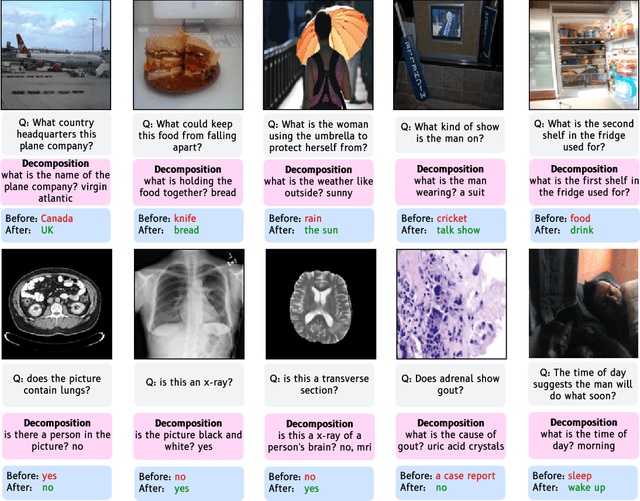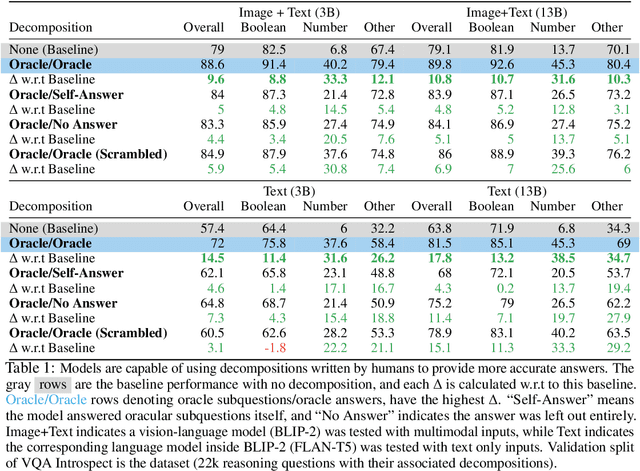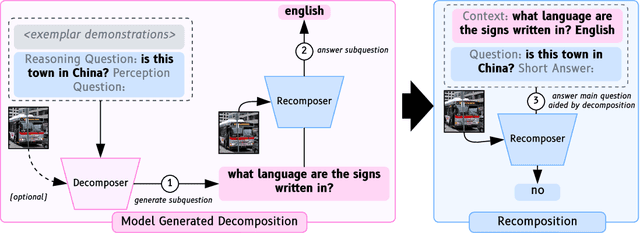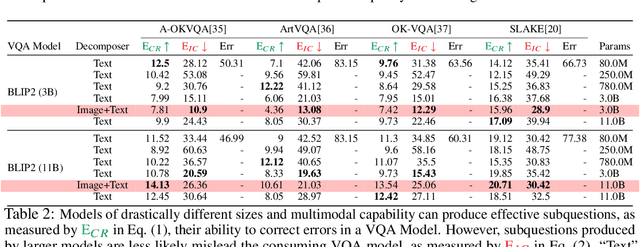Samuel Schulter
LiSu: A Dataset and Method for LiDAR Surface Normal Estimation
Mar 11, 2025Abstract:While surface normals are widely used to analyse 3D scene geometry, surface normal estimation from LiDAR point clouds remains severely underexplored. This is caused by the lack of large-scale annotated datasets on the one hand, and lack of methods that can robustly handle the sparse and often noisy LiDAR data in a reasonable time on the other hand. We address these limitations using a traffic simulation engine and present LiSu, the first large-scale, synthetic LiDAR point cloud dataset with ground truth surface normal annotations, eliminating the need for tedious manual labeling. Additionally, we propose a novel method that exploits the spatiotemporal characteristics of autonomous driving data to enhance surface normal estimation accuracy. By incorporating two regularization terms, we enforce spatial consistency among neighboring points and temporal smoothness across consecutive LiDAR frames. These regularizers are particularly effective in self-training settings, where they mitigate the impact of noisy pseudo-labels, enabling robust real-world deployment. We demonstrate the effectiveness of our method on LiSu, achieving state-of-the-art performance in LiDAR surface normal estimation. Moreover, we showcase its full potential in addressing the challenging task of synthetic-to-real domain adaptation, leading to improved neural surface reconstruction on real-world data.
GBlobs: Explicit Local Structure via Gaussian Blobs for Improved Cross-Domain LiDAR-based 3D Object Detection
Mar 11, 2025Abstract:LiDAR-based 3D detectors need large datasets for training, yet they struggle to generalize to novel domains. Domain Generalization (DG) aims to mitigate this by training detectors that are invariant to such domain shifts. Current DG approaches exclusively rely on global geometric features (point cloud Cartesian coordinates) as input features. Over-reliance on these global geometric features can, however, cause 3D detectors to prioritize object location and absolute position, resulting in poor cross-domain performance. To mitigate this, we propose to exploit explicit local point cloud structure for DG, in particular by encoding point cloud neighborhoods with Gaussian blobs, GBlobs. Our proposed formulation is highly efficient and requires no additional parameters. Without any bells and whistles, simply by integrating GBlobs in existing detectors, we beat the current state-of-the-art in challenging single-source DG benchmarks by over 21 mAP (Waymo->KITTI), 13 mAP (KITTI->Waymo), and 12 mAP (nuScenes->KITTI), without sacrificing in-domain performance. Additionally, GBlobs demonstrate exceptional performance in multi-source DG, surpassing the current state-of-the-art by 17, 12, and 5 mAP on Waymo, KITTI, and ONCE, respectively.
Resolving Inconsistent Semantics in Multi-Dataset Image Segmentation
Sep 15, 2024Abstract:Leveraging multiple training datasets to scale up image segmentation models is beneficial for increasing robustness and semantic understanding. Individual datasets have well-defined ground truth with non-overlapping mask layouts and mutually exclusive semantics. However, merging them for multi-dataset training disrupts this harmony and leads to semantic inconsistencies; for example, the class "person" in one dataset and class "face" in another will require multilabel handling for certain pixels. Existing methods struggle with this setting, particularly when evaluated on label spaces mixed from the individual training sets. To overcome these issues, we introduce a simple yet effective multi-dataset training approach by integrating language-based embeddings of class names and label space-specific query embeddings. Our method maintains high performance regardless of the underlying inconsistencies between training datasets. Notably, on four benchmark datasets with label space inconsistencies during inference, we outperform previous methods by 1.6% mIoU for semantic segmentation, 9.1% PQ for panoptic segmentation, 12.1% AP for instance segmentation, and 3.0% in the newly proposed PIQ metric.
Progressive Token Length Scaling in Transformer Encoders for Efficient Universal Segmentation
Apr 23, 2024



Abstract:A powerful architecture for universal segmentation relies on transformers that encode multi-scale image features and decode object queries into mask predictions. With efficiency being a high priority for scaling such models, we observed that the state-of-the-art method Mask2Former uses ~50% of its compute only on the transformer encoder. This is due to the retention of a full-length token-level representation of all backbone feature scales at each encoder layer. With this observation, we propose a strategy termed PROgressive Token Length SCALing for Efficient transformer encoders (PRO-SCALE) that can be plugged-in to the Mask2Former-style segmentation architectures to significantly reduce the computational cost. The underlying principle of PRO-SCALE is: progressively scale the length of the tokens with the layers of the encoder. This allows PRO-SCALE to reduce computations by a large margin with minimal sacrifice in performance (~52% GFLOPs reduction with no drop in performance on COCO dataset). We validate our framework on multiple public benchmarks.
Self-Training Large Language Models for Improved Visual Program Synthesis With Visual Reinforcement
Apr 06, 2024



Abstract:Visual program synthesis is a promising approach to exploit the reasoning abilities of large language models for compositional computer vision tasks. Previous work has used few-shot prompting with frozen LLMs to synthesize visual programs. Training an LLM to write better visual programs is an attractive prospect, but it is unclear how to accomplish this. No dataset of visual programs for training exists, and acquisition of a visual program dataset cannot be easily crowdsourced due to the need for expert annotators. To get around the lack of direct supervision, we explore improving the program synthesis abilities of an LLM using feedback from interactive experience. We propose a method where we exploit existing annotations for a vision-language task to improvise a coarse reward signal for that task, treat the LLM as a policy, and apply reinforced self-training to improve the visual program synthesis ability of the LLM for that task. We describe a series of experiments on object detection, compositional visual question answering, and image-text retrieval, and show that in each case, the self-trained LLM outperforms or performs on par with few-shot frozen LLMs that are an order of magnitude larger. Website: https://zaidkhan.me/ViReP
AIDE: An Automatic Data Engine for Object Detection in Autonomous Driving
Mar 26, 2024Abstract:Autonomous vehicle (AV) systems rely on robust perception models as a cornerstone of safety assurance. However, objects encountered on the road exhibit a long-tailed distribution, with rare or unseen categories posing challenges to a deployed perception model. This necessitates an expensive process of continuously curating and annotating data with significant human effort. We propose to leverage recent advances in vision-language and large language models to design an Automatic Data Engine (AIDE) that automatically identifies issues, efficiently curates data, improves the model through auto-labeling, and verifies the model through generation of diverse scenarios. This process operates iteratively, allowing for continuous self-improvement of the model. We further establish a benchmark for open-world detection on AV datasets to comprehensively evaluate various learning paradigms, demonstrating our method's superior performance at a reduced cost.
Generating Enhanced Negatives for Training Language-Based Object Detectors
Dec 29, 2023Abstract:The recent progress in language-based open-vocabulary object detection can be largely attributed to finding better ways of leveraging large-scale data with free-form text annotations. Training such models with a discriminative objective function has proven successful, but requires good positive and negative samples. However, the free-form nature and the open vocabulary of object descriptions make the space of negatives extremely large. Prior works randomly sample negatives or use rule-based techniques to build them. In contrast, we propose to leverage the vast knowledge built into modern generative models to automatically build negatives that are more relevant to the original data. Specifically, we use large-language-models to generate negative text descriptions, and text-to-image diffusion models to also generate corresponding negative images. Our experimental analysis confirms the relevance of the generated negative data, and its use in language-based detectors improves performance on two complex benchmarks.
Exploring Question Decomposition for Zero-Shot VQA
Oct 25, 2023



Abstract:Visual question answering (VQA) has traditionally been treated as a single-step task where each question receives the same amount of effort, unlike natural human question-answering strategies. We explore a question decomposition strategy for VQA to overcome this limitation. We probe the ability of recently developed large vision-language models to use human-written decompositions and produce their own decompositions of visual questions, finding they are capable of learning both tasks from demonstrations alone. However, we show that naive application of model-written decompositions can hurt performance. We introduce a model-driven selective decomposition approach for second-guessing predictions and correcting errors, and validate its effectiveness on eight VQA tasks across three domains, showing consistent improvements in accuracy, including improvements of >20% on medical VQA datasets and boosting the zero-shot performance of BLIP-2 above chance on a VQA reformulation of the challenging Winoground task. Project Site: https://zaidkhan.me/decomposition-0shot-vqa/
Efficient Controllable Multi-Task Architectures
Aug 22, 2023Abstract:We aim to train a multi-task model such that users can adjust the desired compute budget and relative importance of task performances after deployment, without retraining. This enables optimizing performance for dynamically varying user needs, without heavy computational overhead to train and save models for various scenarios. To this end, we propose a multi-task model consisting of a shared encoder and task-specific decoders where both encoder and decoder channel widths are slimmable. Our key idea is to control the task importance by varying the capacities of task-specific decoders, while controlling the total computational cost by jointly adjusting the encoder capacity. This improves overall accuracy by allowing a stronger encoder for a given budget, increases control over computational cost, and delivers high-quality slimmed sub-architectures based on user's constraints. Our training strategy involves a novel 'Configuration-Invariant Knowledge Distillation' loss that enforces backbone representations to be invariant under different runtime width configurations to enhance accuracy. Further, we present a simple but effective search algorithm that translates user constraints to runtime width configurations of both the shared encoder and task decoders, for sampling the sub-architectures. The key rule for the search algorithm is to provide a larger computational budget to the higher preferred task decoder, while searching a shared encoder configuration that enhances the overall MTL performance. Various experiments on three multi-task benchmarks (PASCALContext, NYUDv2, and CIFAR100-MTL) with diverse backbone architectures demonstrate the advantage of our approach. For example, our method shows a higher controllability by ~33.5% in the NYUD-v2 dataset over prior methods, while incurring much less compute cost.
Improving Pseudo Labels for Open-Vocabulary Object Detection
Aug 11, 2023Abstract:Recent studies show promising performance in open-vocabulary object detection (OVD) using pseudo labels (PLs) from pretrained vision and language models (VLMs). However, PLs generated by VLMs are extremely noisy due to the gap between the pretraining objective of VLMs and OVD, which blocks further advances on PLs. In this paper, we aim to reduce the noise in PLs and propose a method called online Self-training And a Split-and-fusion head for OVD (SAS-Det). First, the self-training finetunes VLMs to generate high quality PLs while prevents forgetting the knowledge learned in the pretraining. Second, a split-and-fusion (SAF) head is designed to remove the noise in localization of PLs, which is usually ignored in existing methods. It also fuses complementary knowledge learned from both precise ground truth and noisy pseudo labels to boost the performance. Extensive experiments demonstrate SAS-Det is both efficient and effective. Our pseudo labeling is 3 times faster than prior methods. SAS-Det outperforms prior state-of-the-art models of the same scale by a clear margin and achieves 37.4 AP$_{50}$ and 27.3 AP$_r$ on novel categories of the COCO and LVIS benchmarks, respectively.
 Add to Chrome
Add to Chrome Add to Firefox
Add to Firefox Add to Edge
Add to Edge